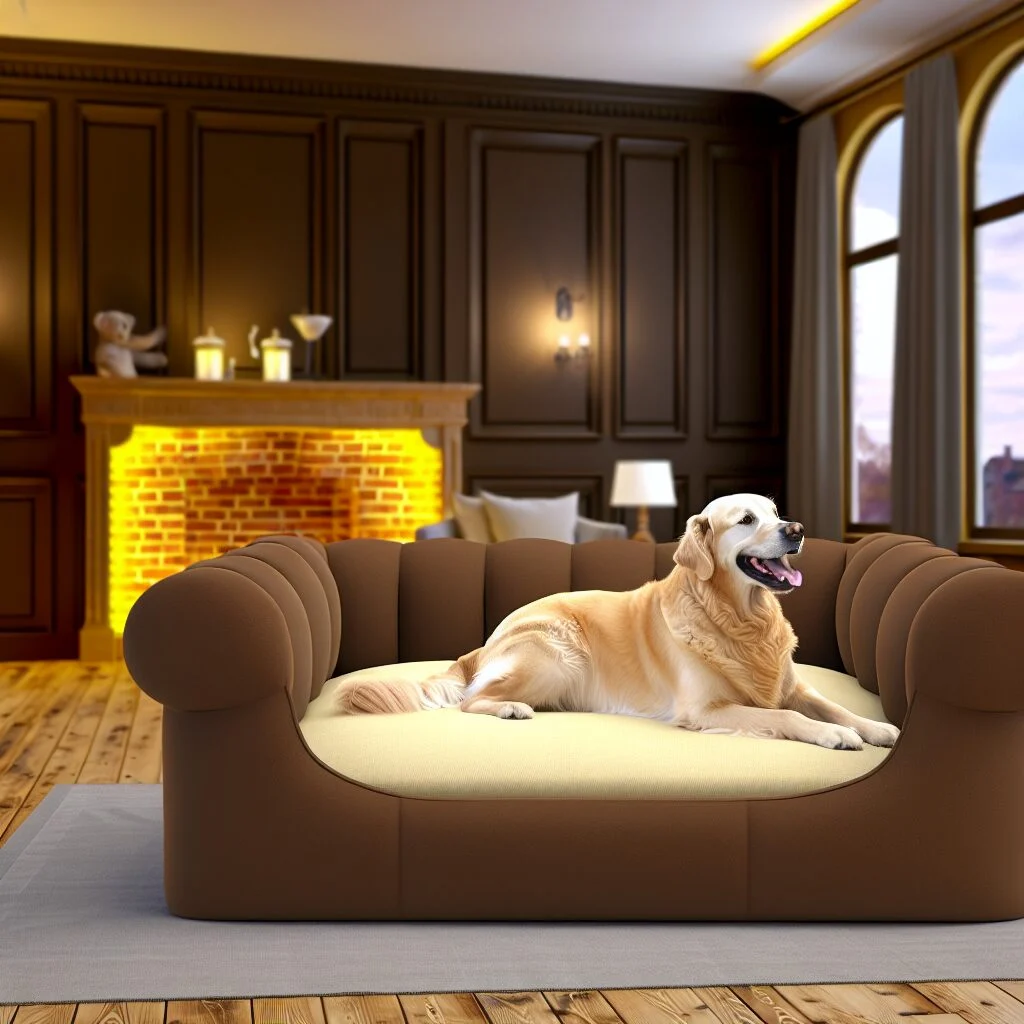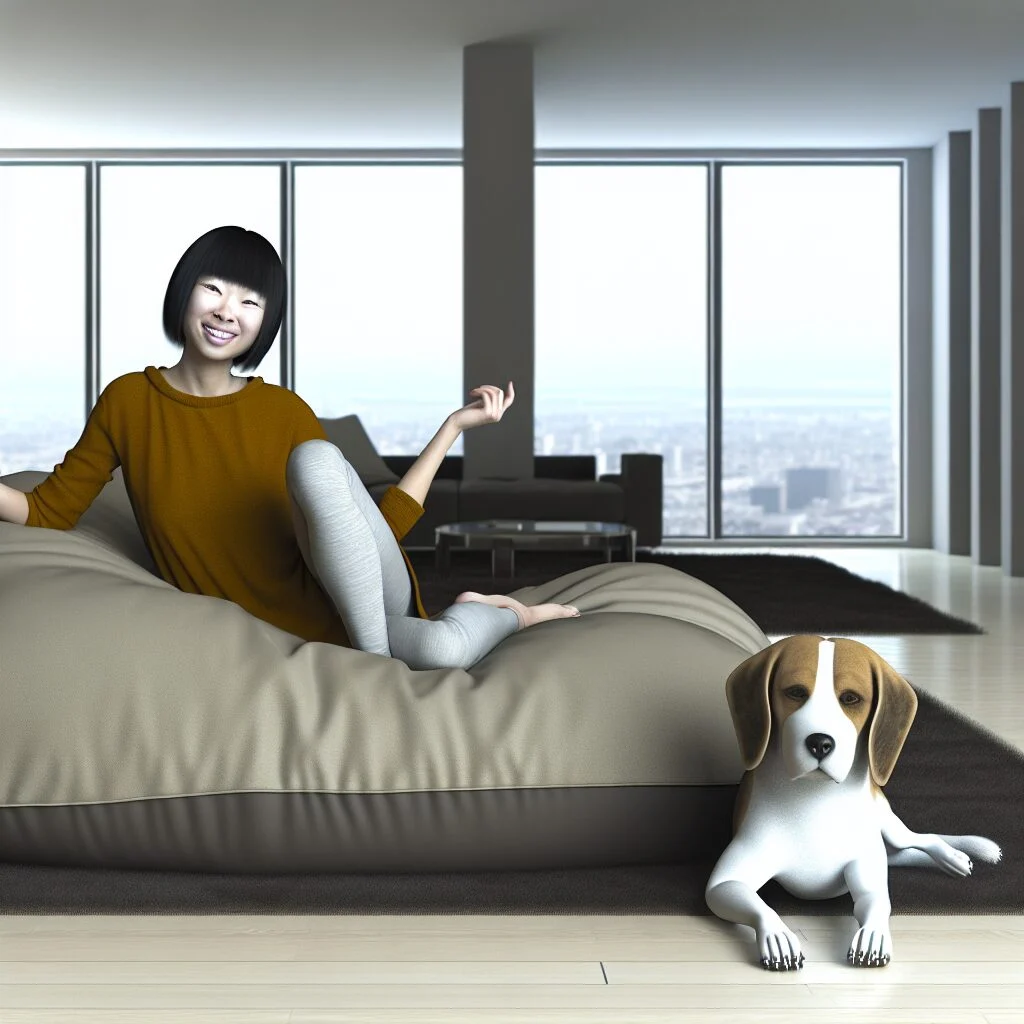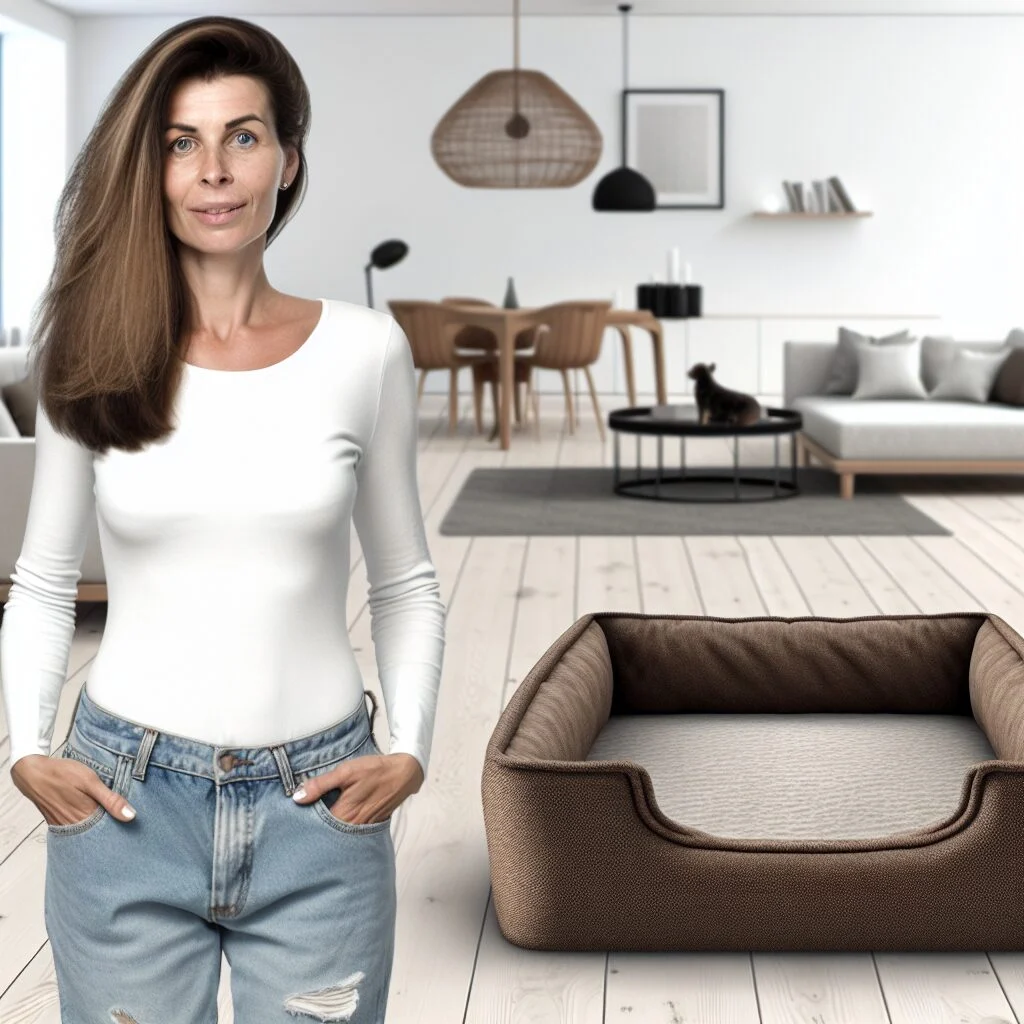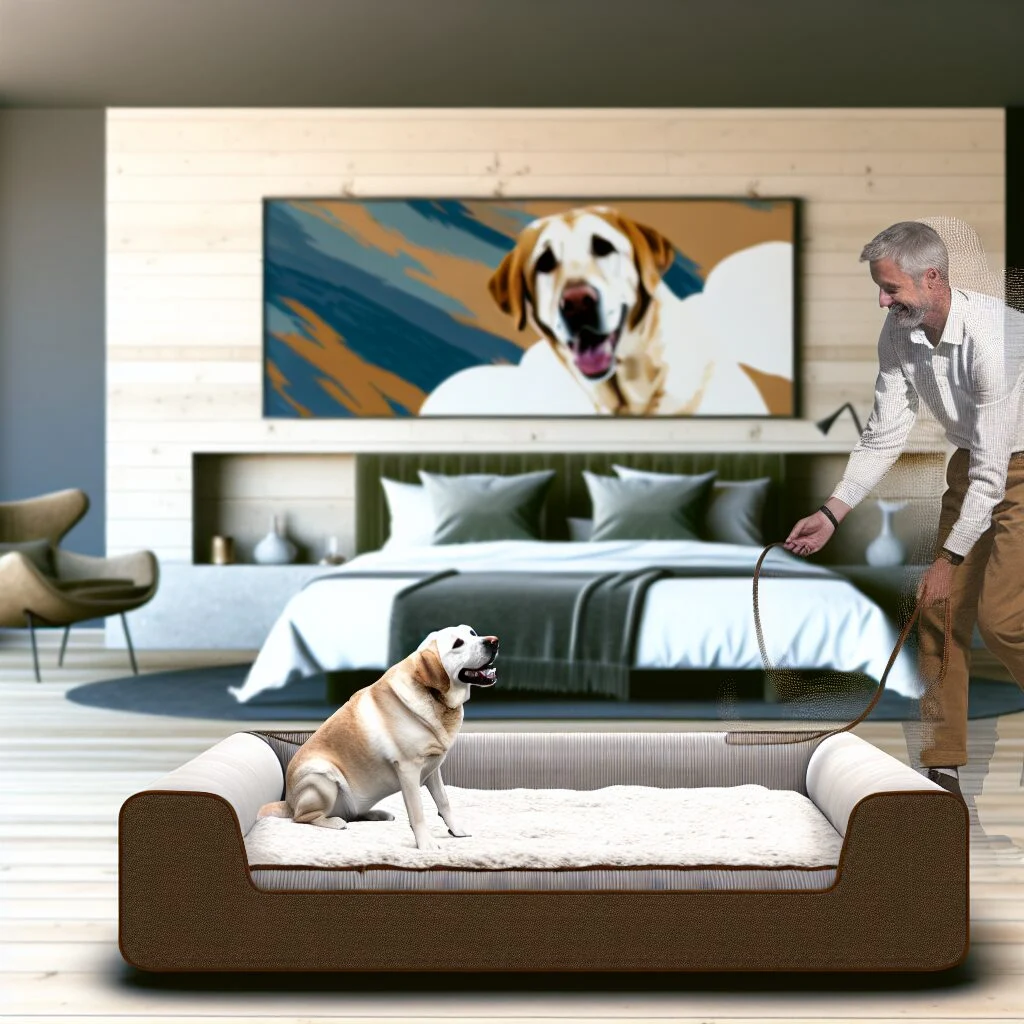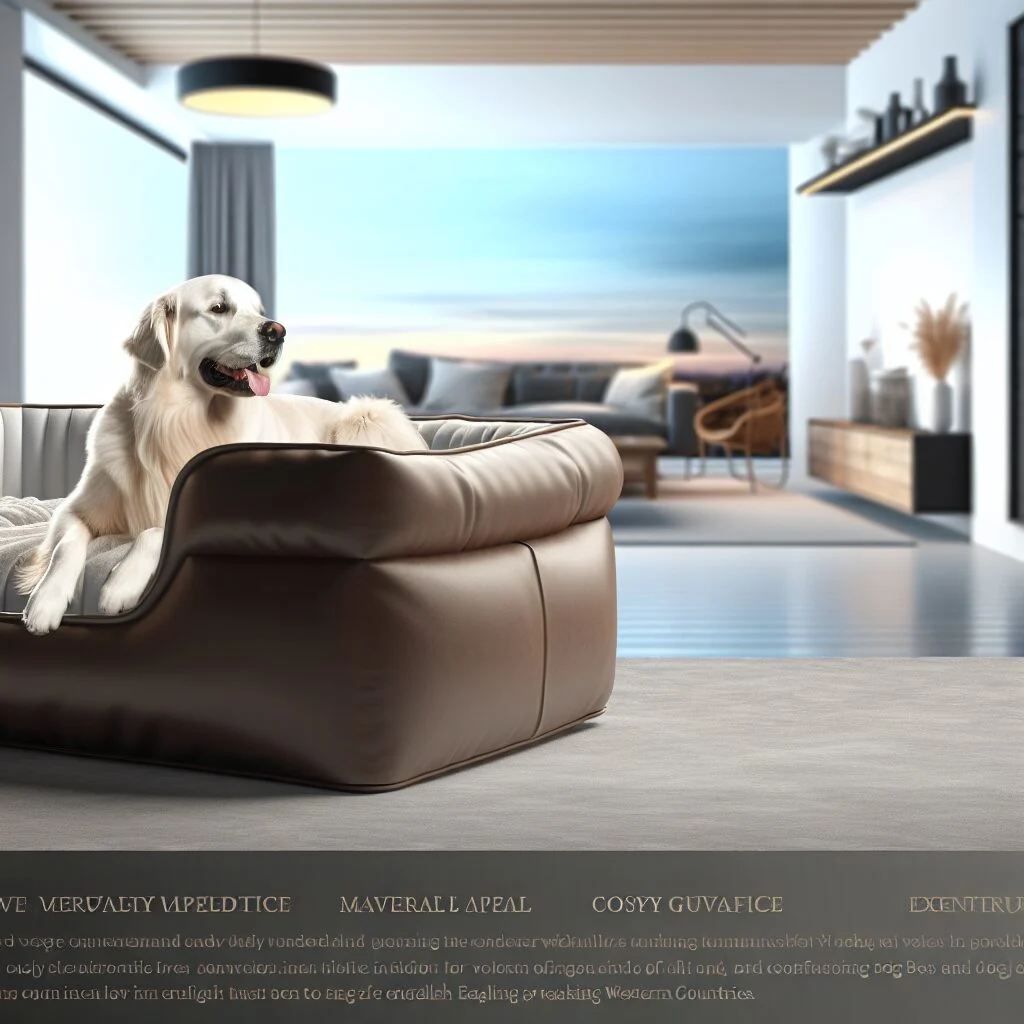The Ultimate Guide to Fluffy Human Dog Beds: Comfort Redefined
Have you ever looked at your dog snoozing contentedly in their plush dog bed and thought, “That looks incredibly comfortable”? You’re not alone. The human dog bed trend has been gaining momentum as people discover the unparalleled comfort of these oversized, cushiony havens. Designed to mimic the cozy, enveloping feeling of a traditional dog bed but scaled up for human use, these innovative sleep solutions are revolutionizing how we think about relaxation spaces in our homes. From the viral sensation of the Plufl—marketed as the world’s first official human dog bed—to DIY alternatives that pet owners are crafting themselves, this unique furniture category has captured the imagination of comfort seekers everywhere.
What Exactly Is a Human Dog Bed?
A human dog bed is exactly what it sounds like: a dog bed sized for human use. These beds typically feature an oval or round shape with bolstered edges that create a nest-like environment. The design mimics traditional pet beds but with dimensions generous enough to accommodate adult humans. The most distinctive feature is the 360-degree pillow bolster that surrounds the mattress, providing support for your head, back, and limbs while creating a sense of security and enclosure that many find deeply comforting.
The concept gained mainstream attention when the Plufl, created by University of British Columbia students Noah Silverman and Yuki Kinoshita, became a viral sensation after appearing on Shark Tank. Inspired by Great Danes, which are almost human-sized, the founders wondered why humans couldn’t enjoy the same cozy experience as our canine companions. The result was a product that combines the best elements of traditional mattresses, body pillows, and pet beds into a unique relaxation solution that addresses modern comfort needs.
The Psychology Behind the Comfort
The appeal of human dog beds isn’t just about physical comfort—there’s a psychological dimension as well. The enclosed, nest-like design creates a sense of security that can be particularly soothing for people with anxiety. This design taps into our primal need for safe, enclosed spaces, similar to how weighted blankets provide comfort through deep pressure stimulation.
The bolstered edges offer a sensation similar to being hugged or held, activating our body’s relaxation response. This can trigger the release of oxytocin and serotonin—hormones associated with feelings of wellbeing and relaxation. For individuals with sensory processing sensitivities, ADHD, or anxiety disorders, the gentle, even pressure from all directions can provide notable relief from overstimulation and stress.
Additionally, there’s something inherently comforting about the informal, unpretentious nature of lounging in what is essentially an oversized pet bed. It bypasses our adult seriousness and connects us with a more playful, carefree aspect of ourselves—similar to the appeal of blanket forts or hammocks. This combination of physical comfort and psychological ease makes human dog beds more than just a novelty; they’re addressing genuine human needs for security and comfort in an increasingly stressful world.
The Plufl: Pioneer of the Human Dog Bed Movement
When discussing human dog beds, it’s impossible not to highlight the Plufl, which has positioned itself as the original and premier option in this emerging market. Crafted with high-quality materials, the Plufl features a thick orthopedic foam base covered with faux fur and surrounded by pillow bolsters that create its distinctive nest-like shape. Available in neutral colors designed to complement most home décor schemes, the Plufl transformed from a college project into a multi-million dollar business that captured the imagination of comfort enthusiasts worldwide.
The Plufl’s success stems from its thoughtful design elements that address specific comfort needs. The memory foam base provides support while conforming to your body, similar to high-quality mattresses. Meanwhile, the bolsters are strategically positioned to support your head, back, and knees simultaneously—something traditional furniture rarely accomplishes. The cover uses a premium faux fur that’s both soft against the skin and durable enough for regular use.
Users report that the Plufl excels for activities beyond just napping. Many find it ideal for reading, working on laptops, watching television, or even meditation and gentle stretching. Its versatility as a multi-purpose comfort station has made it particularly popular in studio apartments and small homes, where furniture needs to serve multiple functions. While the price point (typically between $399-$499) positions it as a premium product, devotees insist the comfort benefits justify the investment.
Benefits of Using a Human Dog Bed
The growing popularity of human dog beds isn’t just about novelty—these specialized comfort solutions offer several tangible benefits that address common relaxation challenges:
- Anxiety and Stress Reduction: The enclosed, nest-like design creates a sense of security that can significantly reduce anxiety. Many users report that the gentle pressure from the surrounding bolsters produces a calming effect similar to weighted blankets, making these beds particularly beneficial for individuals with anxiety disorders or high-stress lifestyles.
- Improved Napping Experience: For dedicated nappers, human dog beds provide superior comfort compared to couches or regular beds. The bolstered edges prevent you from rolling while asleep, while the ergonomic design supports your body in ways that conventional furniture cannot match.
- Back and Joint Support: The combination of orthopedic foam bases and strategic bolster placement offers excellent support for those with back pain, arthritis, or other joint issues. The design encourages a naturally aligned spine position while providing cushioning that relieves pressure points.
- Sensory Comfort: For individuals with sensory processing sensitivities, including those with autism spectrum disorders or ADHD, the gentle, consistent pressure and soft textures provide valuable sensory regulation benefits.
- Versatility: Unlike traditional furniture that serves a single purpose, human dog beds function as flexible comfort stations for reading, working, watching TV, meditating, or even gentle stretching and yoga.
- Pet Bonding: Perhaps unsurprisingly, these beds facilitate quality time with pets. Many users report that their dogs and cats naturally gravitate to these beds, creating an ideal shared relaxation space that strengthens the human-animal bond.
- Space Efficiency: For small apartments or studios, a human dog bed can serve multiple functions—guest bed, reading nook, meditation space—while taking up less room than several pieces of conventional furniture.
These benefits explain why human dog beds have transcended their initial novelty status to become legitimate lifestyle products that address genuine comfort needs in our increasingly stressed and space-constrained modern lives.
DIY Human Dog Bed: Creating Your Own Comfort Haven
While commercial options like the Plufl have set high standards for human dog beds, many comfort enthusiasts are discovering the satisfaction of creating custom versions tailored to their specific preferences and budget constraints. Building your own human dog bed allows for personalization in size, firmness, materials, and aesthetics that factory-made alternatives simply cannot match.
Creating a DIY human dog bed requires thoughtful planning and material selection. The foundation typically consists of high-density foam that provides adequate support while conforming to your body. Many DIY builders opt for a combination of memory foam for the base layer, topped with softer foam for immediate comfort. The bolsters—a defining feature of any proper human dog bed—are usually constructed from medium-density foam tubes or stuffed fabric cylinders that provide both support and the characteristic nest-like enclosure.
The cover material selection is particularly important for both comfort and durability. Popular choices include:
- Minky fabric: Ultra-soft and plush, providing a luxurious feel against skin
- Microsuede: Durable and easy to clean while still feeling soft
- Faux fur: Creates the classic dog bed look with excellent texture
- Washable slipcovers: Essential for maintaining hygiene with regular use
To create your own human dog bed, you’ll need the following materials and tools:
- High-density foam for the base (at least 4-6 inches thick)
- Medium-density foam tubes or polyester filling for bolsters
- Durable, soft fabric for the exterior (at least 5-6 yards depending on size)
- Heavy-duty thread
- Sewing machine (though hand-sewing is possible for smaller projects)
- Scissors and fabric cutting tools
- Measuring tape
- Optional waterproof liner if outdoor use is anticipated
Step-by-Step Guide to Building Your Own Human Dog Bed
If you’re ready to embark on creating your own human dog bed, follow this comprehensive guide for professional-quality results that will provide years of comfort:
1. Planning and Measurement
Begin by determining the ideal dimensions for your bed based on your height and preferred sleeping position. For most adults, an oval shape approximately 66-72 inches long and 38-44 inches wide provides adequate space. Measure carefully and create a paper template if necessary to visualize the final product’s footprint in your space.
2. Creating the Base
Cut your high-density foam to the desired shape using an electric carving knife for cleanest results. For enhanced comfort, consider a layered approach with firmer support foam on the bottom and softer comfort foam on top. Shape the edges of your foam base to be slightly rounded rather than sharp-cornered for better aesthetics and comfort.
3. Forming the Bolsters
The bolsters are what transform a simple cushion into a true human dog bed. Create them either by:
- Cutting foam tubes to match the perimeter of your base, then shaping them to form a continuous ring
- Creating fabric tubes filled with polyester stuffing that can be shaped around the perimeter
The bolsters should stand approximately 8-12 inches high from the base to provide adequate support and the characteristic nest-like feeling.
4. Creating the Cover
The cover construction is the most technically challenging part of the process:
- Cut your fabric into three main pieces: a large oval for the top, a matching oval for the bottom, and a long strip for the bolster covering and sides
- Sew the bolster cover into a long tube, leaving one end open for inserting the foam or filling
- Attach the bolster tube to the top oval piece, carefully easing around curves
- Attach the side fabric to create the full cover structure
- Consider adding a zipper or velcro closure for easier removal and washing
5. Final Assembly
Insert the foam base and bolsters into their respective cover sections. Take care to distribute any filling evenly to prevent lumps or thin spots. Once everything is positioned correctly, close any openings and fluff the bolsters to achieve the desired shape. Your DIY human dog bed is now ready for use!
6. Customization Options
One advantage of DIY construction is the ability to add personalized touches:
- Consider adding handles for easier repositioning
- Create a removable, washable top layer for simplified cleaning
- Add a pocket on the exterior for storing books, remote controls, or devices
- For the environmentally conscious, use recycled foam or eco-friendly fillings
- Create themed designs with fabric choices that match your home’s aesthetic
Building your own human dog bed typically costs between $150-$300 depending on material quality, significantly less than premium commercial options while allowing for complete customization of the final product.
Choosing the Right Materials for Maximum Comfort and Durability
Whether purchasing a commercial human dog bed or creating your own, understanding material options is crucial for achieving the perfect balance of comfort, support, and longevity. The materials you select will directly impact how your bed feels, how well it supports your body, and how it holds up over time with regular use.
Foam Selection
The foundation of any quality human dog bed is the foam base. Several options exist, each with distinct properties:
- Memory Foam: Contours to your body shape and provides excellent pressure relief. Look for high-density memory foam (at least 4-5 lb density) that won’t flatten quickly with use. Memory foam comes in different firmness levels, so consider whether you prefer a softer or more supportive feel.
- Orthopedic Foam: Specifically designed to support joints and alleviate pressure points. This is an excellent choice for anyone with back pain, arthritis, or other musculoskeletal concerns. Quality orthopedic foam will have a density of at least 1.8 lbs per cubic foot.
- Gel-Infused Foam: Combines the contouring properties of memory foam with cooling gel that helps dissipate body heat—ideal for “hot sleepers” or use in warmer climates.
- Eco-Friendly Options: For the environmentally conscious, consider natural latex foam or plant-based memory foam alternatives that reduce petroleum-based ingredients.
For bolsters, medium-density foam strikes the ideal balance between supportive structure and comfortable softness. Bolsters should be firm enough to maintain their shape but soft enough to provide gentle, comfortable pressure.
Cover Fabrics
The exterior fabric is what you’ll directly contact, making it crucial for both comfort and practical maintenance:
- Minky Fabric: Ultra-soft with a plush texture that many find irresistibly comfortable. However, it can trap heat, making it better suited for cooler environments.
- Microsuede: Offers a good balance of softness and durability with a velvety texture. Relatively easy to clean and resistant to pilling with proper care.
- Faux Fur: Creates a luxurious, indulgent feel and aesthetic appeal but can be more challenging to clean thoroughly and may trap more allergens.
- Performance Fabrics: Engineered textiles like Crypton or Sunbrella offer superior stain resistance and durability, making them ideal for households with children, pets, or frequent use.
- Cooling Fabrics: Materials like bamboo-derived viscose or specialized cooling textiles help regulate temperature for more comfortable use in warmer conditions.
Always consider whether your chosen cover fabric is removable and machine-washable—a feature that significantly improves long-term hygiene and maintenance. For those with allergies or respiratory sensitivities, hypoallergenic fabrics and fillings are worth the additional investment.
Waterproofing Considerations
For maximum durability and hygiene, consider incorporating waterproof elements into your human dog bed:
- A waterproof inner liner protects the foam from potential spills, sweat, or accidents
- Water-resistant exterior fabrics provide an additional defense layer
- Removable, washable covers simplify regular cleaning
These features are particularly important if you plan to share your human dog bed with actual pets or use it in outdoor settings like patios or sunrooms. A properly waterproofed human dog bed will last significantly longer and maintain better hygiene than unprotected alternatives.
Integrating a Human Dog Bed Into Your Living Space
One consideration that potential human dog bed owners should address is how to incorporate this unconventional piece into their existing home décor. Unlike traditional furniture with centuries of established design precedent, the human dog bed is a relatively new concept that requires thoughtful placement and styling to avoid appearing out of place or juvenile in sophisticated interiors.
Strategic placement is key to successful integration. Consider these ideal locations:
- Reading nooks: Tucked into a corner with good natural light and a small side table for books and beverages
- Home offices: Positioned near but separate from your workspace as a designated relaxation zone
- Living room alternatives: As a complement to conventional seating rather than a replacement
- Bedroom retreats: For a secondary relaxation space separate from your primary bed
- Multipurpose rooms: In spaces that serve dual functions like home gym/relaxation areas or office/guest rooms
- Sunrooms or enclosed porches: Creating a cozy relaxation zone in transitional spaces
From a design perspective, choose colors and textures that complement your existing interior palette rather than competing with it. Many commercial human dog beds come in neutral tones specifically to blend with diverse décor styles, while DIY versions can be customized to match exact color schemes. Consider adding throw pillows or a coordinating throw blanket to help visually connect the bed with other furniture elements in the space.
For smaller homes and apartments where space efficiency is crucial, look for models with additional storage functionality or ensure your human dog bed can serve multiple purposes. Some users repurpose their human dog beds as impromptu guest sleeping arrangements, meditation platforms, or even casual seating for movie nights when traditional furniture is at capacity.
Maintenance and Care Tips for Long-Lasting Comfort
Proper maintenance ensures your human dog bed remains a hygienic, comfortable retreat for years to come. These specialized comfort stations require specific care approaches to preserve their distinctive shape, support, and softness.
For routine cleaning, most human dog beds with removable covers allow for machine washing. Follow these guidelines:
- Always check manufacturer instructions or fabric recommendations first
- Use cold or warm water (not hot) to prevent shrinking
- Select gentle cycle with mild detergent free of harsh chemicals
- Avoid bleach or fabric softeners which can break down waterproofing and protective finishes
- Air dry when possible, or use low heat settings if machine drying is necessary
For beds without removable covers, spot cleaning becomes essential. Keep an upholstery cleaner appropriate for your cover material on hand for quick response to spills or stains. Addressing accidents immediately prevents permanent discoloration or odors from developing.
Beyond surface cleaning, maintaining the structural integrity of your human dog bed requires attention to the foam and filling components. Every few weeks:
- Fluff and redistribute filling in bolsters to prevent uneven compression
- Rotate the entire bed periodically if used predominantly in one orientation
- Allow foam to fully expand after compression before reattaching covers
- Inspect seams and closures for signs of wear that might need repair
For long-term preservation, consider these professional recommendations:
- Use a mattress protector or waterproof liner between the foam and outer cover
- Keep the bed away from direct sunlight which can degrade foam and fade fabrics
- Maintain distance from heating vents or radiators which can dry out foam and reduce its resilience
- Perform a deep cleaning at least twice yearly, including washing covers and airing out foam components
- Address minor repairs promptly before they develop into more significant issues
With proper care, a quality human dog bed should maintain its comfort and support for 3-5 years of regular use before foam components may need replacement. The exterior covers, with appropriate maintenance, can last even longer—particularly those made from performance fabrics specifically designed for durability.
Beyond Relaxation: Therapeutic Applications of Human Dog Beds
While human dog beds are marketed primarily as comfort and relaxation solutions, their unique design features have revealed promising therapeutic applications that extend beyond simple lounging. Healthcare professionals, including occupational therapists and mental health specialists, have begun noting the potential benefits these specialized beds offer for various conditions.
For individuals with anxiety disorders or sensory processing challenges, the gentle, consistent pressure provided by the surrounding bolsters creates a calming effect similar to compression therapy. This can be particularly beneficial during anxiety attacks or sensory overload situations, providing a safe retreat that helps regulate emotional responses. The enclosed design creates what therapists call a “sensory sanctuary”—a space where environmental stimulation is reduced, allowing the nervous system to regulate more effectively.
Physical therapists have noted applications for individuals recovering from certain injuries or surgeries as well. The supportive design naturally encourages proper spinal alignment while minimizing pressure on sensitive areas. For those dealing with chronic pain conditions like fibromyalgia, the even distribution of body weight across the soft surface can provide temporary relief from discomfort that traditional furniture might exacerbate.
Perhaps most surprisingly, some sleep specialists have begun recommending human dog beds as transitional sleep solutions for individuals struggling with insomnia or sleep anxiety. The distinctive design helps create psychological separation between daytime stress and relaxation, potentially serving as a “sleep training” tool that helps recondition the brain to associate the specific environment with rest rather than vigilance.
It’s important to note that while these therapeutic applications show promise, human dog beds should be viewed as complementary tools rather than medical treatments. Anyone considering these beds for specific health concerns should consult appropriate healthcare providers and use them as part of a comprehensive approach to wellbeing rather than as standalone solutions.
Frequently Asked Questions About Fluffy Human Dog Beds
What exactly is a human dog bed?
A human dog bed is an oversized, cushioned bed designed like a traditional dog bed but scaled up for human use. They typically feature a plush, supportive base surrounded by bolstered edges that create a nest-like enclosure. The distinctive design provides 360-degree support that cradles the body and creates a sense of security. The most well-known commercial version is the Plufl, marketed as the world’s first official human dog bed, but many variations exist both commercially and as DIY projects.
How much does a human dog bed cost?
Commercial human dog beds vary significantly in price based on quality, materials, and brand. The Plufl, considered a premium option, typically retails between $399-$499. More affordable commercial alternatives can be found starting around $200-$300. DIY versions can be constructed for approximately $150-$300 depending on the quality of materials chosen. The most significant cost factors are the foam quality, cover fabrics, and craftsmanship. While initially representing a substantial investment, high-quality human dog beds can last 3-5 years with proper care.
What materials are used to make a human dog bed?
Quality human dog beds typically use multiple materials for optimal comfort. The base usually consists of high-density memory foam or orthopedic foam (4-6 inches thick) for proper support. Bolsters are made from medium-density foam tubes or polyester filling that maintains shape while providing soft support. Cover materials range from ultra-soft minky fabric and plush faux fur to more durable microsuede or performance fabrics. Many include waterproof inner liners to protect the foam components. For DIY versions, you’ll need approximately 5-6 yards of exterior fabric, foam for the base and bolsters, and appropriate tools for cutting and assembly.
Can I make a waterproof human dog bed for outdoor use?
Yes, you can create a waterproof human dog bed suitable for covered outdoor areas by making specific material choices. Start with a fully waterproof inner liner that completely encases all foam components. Select exterior fabrics specifically designed for outdoor use, such as Sunbrella, which resists water, UV damage, and mildew. Apply additional waterproofing treatments to seams and closures, which are common entry points for moisture. Use quick-drying fillings like certain polyester alternatives rather than foam for the bolsters if full waterproofing isn’t possible. Even with these modifications, a human dog bed should not be left fully exposed to the elements for extended periods, and should be used in covered outdoor spaces like porches or patios.
What are the benefits of using a human dog bed?
Human dog beds offer several unique benefits not found in conventional furniture. They provide anxiety and stress reduction through their enclosed, nest-like design that creates a sense of security. The orthopedic foam bases and strategic bolster placement offer excellent back and joint support, relieving pressure points. Many users report improved napping quality due to the body-cradling design. For those with sensory sensitivities, the gentle, consistent pressure provides valuable sensory regulation. These beds are also versatile, functioning as reading nooks, meditation spaces, or laptop workstations. They’re also excellent for pet bonding, creating shared relaxation spaces with your animals. Finally, they offer space efficiency in smaller homes by serving multiple functions in a compact footprint.
How do I clean and maintain a human dog bed?
Proper maintenance ensures your human dog bed remains hygienic and comfortable for years. For beds with removable covers, machine wash on gentle cycle with cold water and mild detergent, avoiding bleach and fabric softeners. Air dry or use low heat settings to prevent shrinkage. For non-removable covers, keep appropriate upholstery cleaners on hand for immediate spot cleaning of spills or stains. Regularly fluff and redistribute filling in bolsters every few weeks to prevent uneven compression. Rotate the entire bed periodically if used predominantly in one direction. Use mattress protectors between foam and outer covers for added protection. Keep away from direct sunlight and heat sources which can degrade materials. With proper care, expect 3-5 years of use before foam components may need replacement.
The human dog bed phenomenon has evolved from a quirky novelty into a legitimate comfort solution addressing real needs for relaxation, anxiety reduction, and sensory comfort in our increasingly stressful world. Whether you choose to invest in a premium product like the Plufl or embark on creating your own custom version, these specialized beds offer a unique combination of physical support and psychological comfort that conventional furniture simply cannot match. As our homes continue to serve multiple functions—from workplaces to sanctuaries—furniture that supports our wellbeing in versatile ways becomes increasingly valuable. The human dog bed represents an innovative response to these evolving needs, providing a simple yet effective tool for creating moments of comfort and calm in our daily lives.
For more information about comfort innovations like the human dog bed, visit Plufl’s official assembly guide or explore DIY communities like The Owner-Builder Network for inspiration and technical guidance on creating your own custom relaxation haven.
